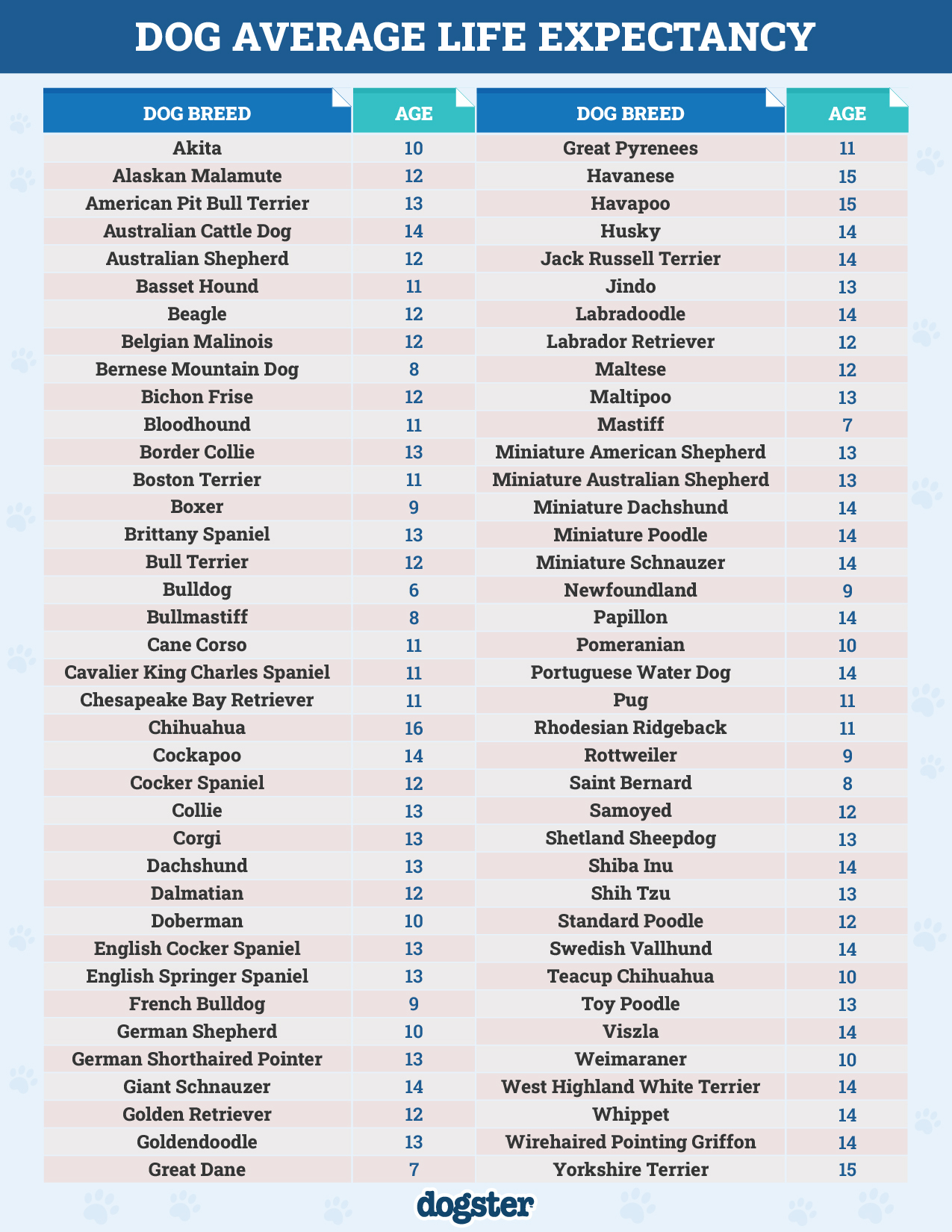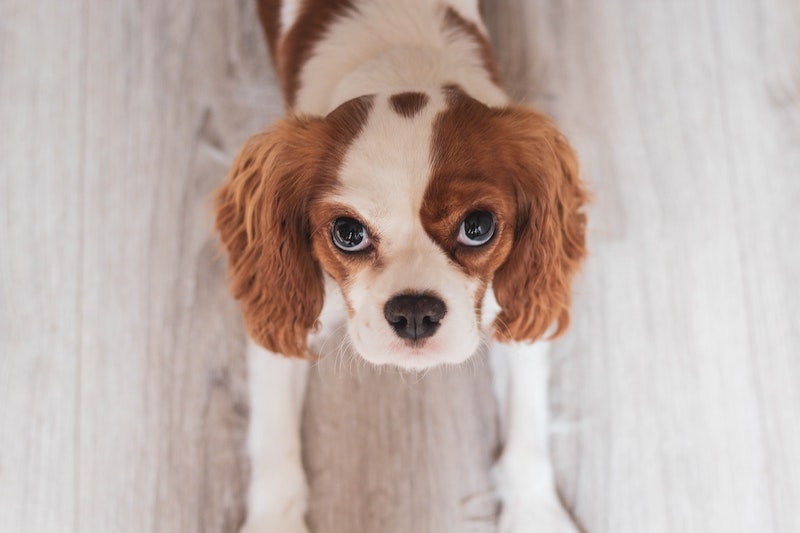In this article
View 3 More +The Cavalier King Charles Spaniel is a beautiful small breed known for their sweet and gentle personality. They’re also quite unique in that they have one of the shortest lifespans of any breed. The average lifespan of a Cavalier is around 10 years, which makes them one of the shortest-lived small dogs.
However, if you understand the factors that influence your pet’s lifespan and take the right steps to care for their health, they can live to be older. Keep reading to learn more about how old your Cavalier could live to be and tips on extending that as much as possible.

What’s the Average Lifespan of a Cavalier King Charles Spaniel?
The typical lifespan of a Cavalier King Charles Spaniel adult dog is around 10 years, but they can reach up to 14 years of age at maximum. While this is impressive, keep in mind that every dog is different and may see different results. Your dog’s lifespan is influenced by various factors, including their genetics, diet, and overall lifestyle. The Cavalier is among the shortest-lived small breeds, along with the Bichon Frise and the Papillon.


Why Do Some Cavalier King Charles Spaniels Live Longer Than Others?
Let’s look at the factors that can influence the lifespan of a Cavalier King Charles Spaniel.
1. Nutrition
Similar to other breeds, providing your Spaniel with whole-food nutrition that is free of preservatives, chemicals, or other harmful additives can lead to better wellness and health. Ultimately, this can increase the dog’s lifespan and reduce cases of chronic diseases, such as diabetes and heart failure. It’s also important to feed your dog the proper amount and not overfeed them, in order to prevent obesity.
2. Environment and Conditions
Cavalier King Charles Spaniels are small dogs, but they are also double-coated. This means that while they are small, they will generally be warm, and chances are that if temperatures are good for you, they are good for them.
That said, temperatures lower than 60 degrees Fahrenheit or over 72 to 76 degrees Fahrenheit may be a bit uncomfortable for your dog and can lead to dehydration, excessive panting, and other heat-related issues.
If your puppy is constantly exposed to these types of conditions, it can negatively affect their health, particularly in terms of skin issues and heart problems.
3. Enclosure Size/Living Quarters/Housing
These pups are great for large or small homes and make perfect “apartment dogs.” A sizable and livable home is all that this breed needs in order to call a place their own. They make great family dogs, and many experts believe that this homelife camaraderie can help extend the canine lifespan.
4. Size
It’s well-known that small dogs tend to outlive large dogs for various reasons. However, the lifespan of the Cavalier is lower than average for small breeds.

5. Sex
Many studies have found that female dogs tend to live a few years longer than males on average, but neutering and spaying can affect this. Dogs that are neutered or spayed tend to live longer than their counterparts, and this is true for this breed too.
6. Genes
The short lifespan of a Cavalier King Charles Spaniel is often attributed to their genetic make-up, particularly their tendency toward a higher rate of cardiac issues and certain orthopedic diseases. This can result in a shorter lifespan than that of other breeds. Thankfully, with the right care, your dog can live beyond that and have a long and healthy life.
7. Breeding History
People breed dogs today to get a particular look, such as big eyes or squishy skin. This can often have a negative impact on a dog’s health. Many Cavaliers have genetic health problems, including mitral valve disease and heart issues. They are also prone to luxating patella, hip dysplasia, and syringomyelia. Some of these issues may be due to inbreeding of the dogs, and others may be due to adaptations over time.

8. Healthcare
Healthcare is one of the main ways that you can increase your Spaniel’s lifespan. Generally, you should take your dog to have a complete physical check-up at least once every year. Consider it routine maintenance for your pet. This way, your vet can get on top of any health conditions and treatments that may be necessary.
Remember to have regular vet visits when owning a Cavalier King Charles Spaniel to keep their health and well-being. If you’re concerned about your dog’s health we suggest you speak to a vet.
If you need to speak with a vet but can't get to one, head over to PangoVet. It's our online service where you can talk to a vet online and get the advice you need for your dog — all at an affordable price!

The 3 Life Stages of a Cavalier King Charles Spaniel
1. Puppy

Puppyhood for Spaniels starts at birth and lasts from about 6 to 18 months. These pups will be in their exploratory stage once they are able to stand up and move around.
Their eyes are usually closed for the first week or two, and they will still feed on their mother’s milk. You can also keep your dog healthy by providing them with supplements and ensuring that they have a warm, soft place to stay, as they will spend most of their time resting.
2. Young Adult
Spaniel pups reach the adolescent age anywhere between 5 and 14 months after being born. This phase is typically associated with large growth spurts, and you will notice your puppy getting more energy throughout each day, despite their clumsy behavior.
You can continue to provide them with supplements at this stage and help the dog adjust to their rapidly changing environment. Socialization is vital, and you can also offer obedience training if your dog is strong and well-behaved enough at this stage.
3. Mature Adult

Cavaliers reach adulthood between 1 and 3 years after birth. They move into seniority once they are about 6 to 10 years old. During their adulthood years, they will reach their maximum weight and height, and this will signal the end of their growth. They will also grow into sexual maturity, at which time, you can choose to have your dog spayed or neutered if they begin to show a drastic change in behavior.
Spaniels should be trained at this point and taken to the vet every year for health exams. If your dog has any short-term health problems, it’s best to discuss these with your vet so they can prescribe treatment or daily supplements.

How to Tell Your Cavalier King Charles Spaniel’s Age
A dog’s age is difficult to determine because different breeds have different lifespans. Still, you can tell a Cavalier’s age, or at least their approximate age, by checking their teeth. The first two teeth that emerge in a puppy are called “wolf teeth.” These are baby teeth that help the puppy chew and swallow.
When a dog has all four adult teeth, the front two of these will be slightly smaller than the back two. An adult dog reaches their full height when they have all four adult teeth. It’s also worth noting that most breeds will experience a growth spurt between 2 and 12 months of age.
You also tell a dog’s age by the color of their fur. Most Cavaliers will have fur that is tan, white, black, brown, or bluish-gray. However, if your dog is suddenly growing gray strands of gray fur, it could mean that they’re at least between 6 and 10 years old.


Conclusion
The Cavalier King Charles Spaniel is a beautiful small dog known for their sweet and gentle personality. They’re also quite unique in that they have one of the shortest average lifespans of any breed, around 10 years. If you understand the factors that influence your pet’s lifespan and take the right steps to care for their health, they can live to be even older, as long as 14 years.
This means doing regular vet visits, encouraging good nutrition, and monitoring for any signs of illness or injury. You can also help your dog’s lifespan by taking care of their teeth, coat, and paws, preventing orthopedic diseases and heart disease, keeping an eye out for other signs of disease, and getting treatment accordingly.
See also:
- Pros & Cons of Getting Cavalier King Charles Spaniels
- Cavalier King Charles Spaniel vs Cocker Spaniel
Featured Image Credit: steshka-willems, Pexels




















